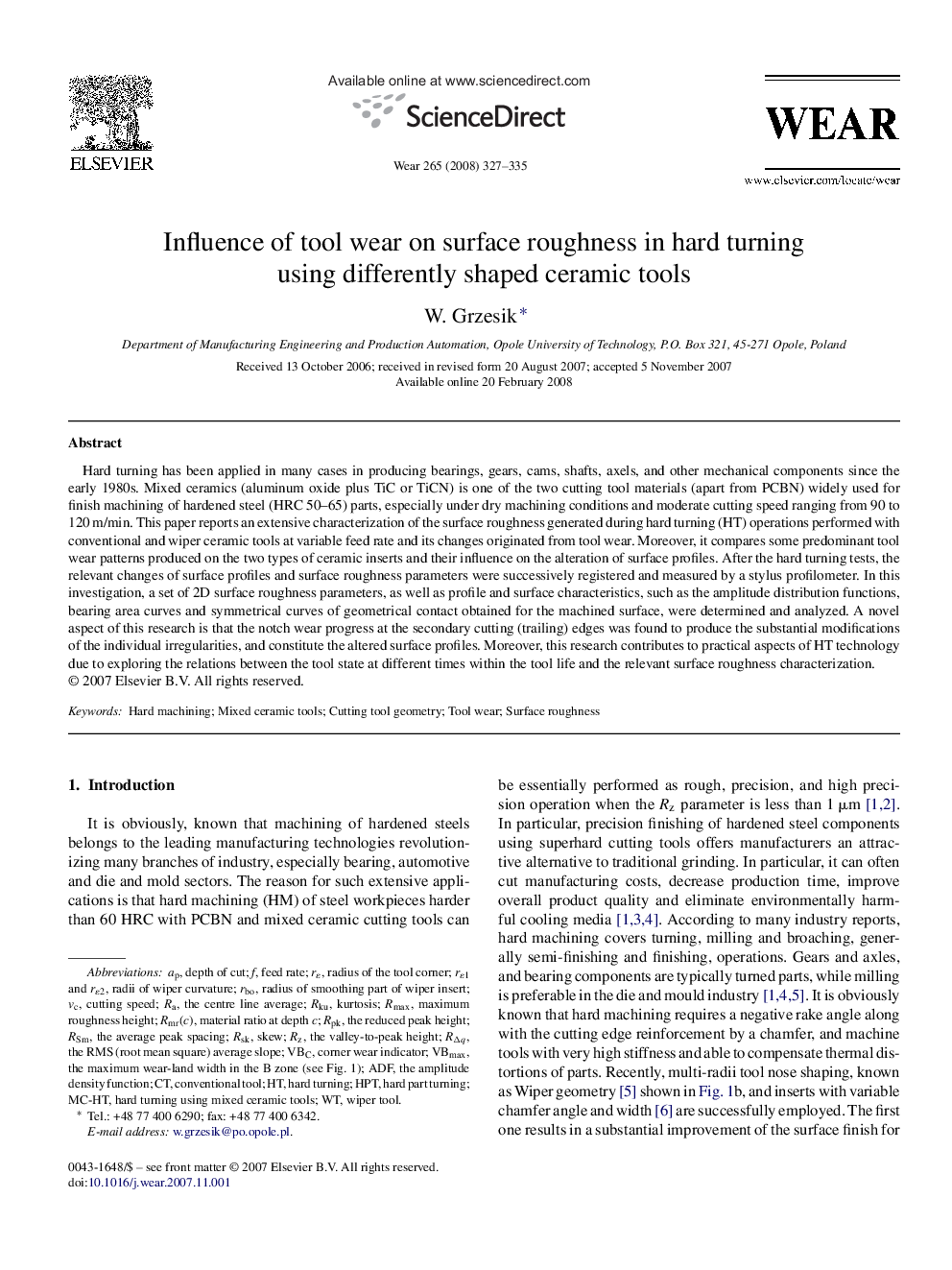| کد مقاله | کد نشریه | سال انتشار | مقاله انگلیسی | نسخه تمام متن |
|---|---|---|---|---|
| 619179 | 1455055 | 2008 | 9 صفحه PDF | دانلود رایگان |
عنوان انگلیسی مقاله ISI
Influence of tool wear on surface roughness in hard turning using differently shaped ceramic tools
دانلود مقاله + سفارش ترجمه
دانلود مقاله ISI انگلیسی
رایگان برای ایرانیان
کلمات کلیدی
موضوعات مرتبط
مهندسی و علوم پایه
مهندسی شیمی
شیمی کلوئیدی و سطحی
پیش نمایش صفحه اول مقاله

چکیده انگلیسی
Hard turning has been applied in many cases in producing bearings, gears, cams, shafts, axels, and other mechanical components since the early 1980s. Mixed ceramics (aluminum oxide plus TiC or TiCN) is one of the two cutting tool materials (apart from PCBN) widely used for finish machining of hardened steel (HRC 50-65) parts, especially under dry machining conditions and moderate cutting speed ranging from 90 to 120Â m/min. This paper reports an extensive characterization of the surface roughness generated during hard turning (HT) operations performed with conventional and wiper ceramic tools at variable feed rate and its changes originated from tool wear. Moreover, it compares some predominant tool wear patterns produced on the two types of ceramic inserts and their influence on the alteration of surface profiles. After the hard turning tests, the relevant changes of surface profiles and surface roughness parameters were successively registered and measured by a stylus profilometer. In this investigation, a set of 2D surface roughness parameters, as well as profile and surface characteristics, such as the amplitude distribution functions, bearing area curves and symmetrical curves of geometrical contact obtained for the machined surface, were determined and analyzed. A novel aspect of this research is that the notch wear progress at the secondary cutting (trailing) edges was found to produce the substantial modifications of the individual irregularities, and constitute the altered surface profiles. Moreover, this research contributes to practical aspects of HT technology due to exploring the relations between the tool state at different times within the tool life and the relevant surface roughness characterization.
ناشر
Database: Elsevier - ScienceDirect (ساینس دایرکت)
Journal: Wear - Volume 265, Issues 3â4, 31 July 2008, Pages 327-335
Journal: Wear - Volume 265, Issues 3â4, 31 July 2008, Pages 327-335
نویسندگان
W. Grzesik,